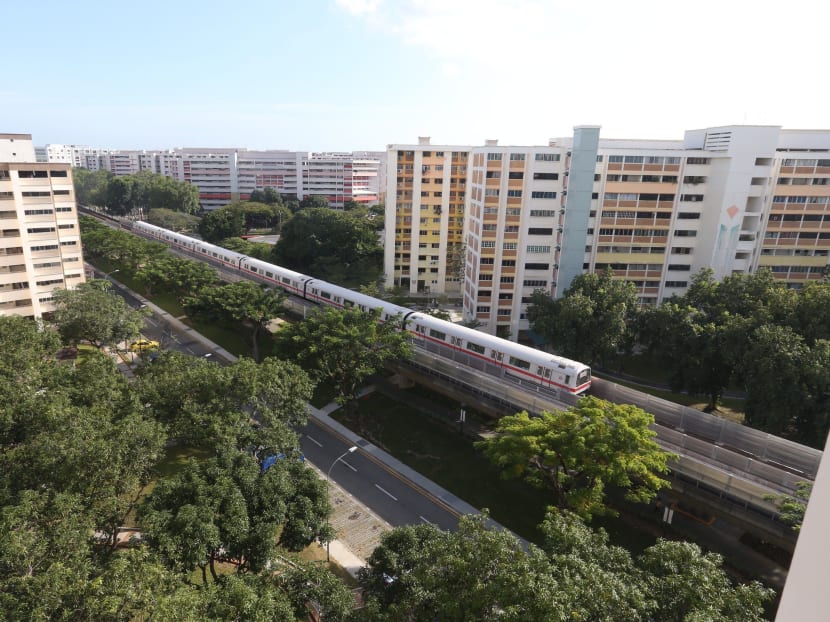Design of S’pore’s oldest MRT lines not ideal and improvements will take time, says Khaw
SINGAPORE — Due to budgetary considerations faced by the government decades ago and the island’s land scarcity, the design of the North-South and East-West lines — Singapore’s oldest MRT lines which were first opened in 1987 — is not ideal.
SINGAPORE — Due to budgetary considerations faced by the government decades ago and the island’s land scarcity, the design of the North-South and East-West lines — Singapore’s oldest MRT lines which were opened in 1987 — is not ideal.
And overcoming the constraints would require the halting of operations for an extended period and at large costs to taxpayers, Transport Minister Khaw Boon Wan told the House on Tuesday (Nov 7).
For instance, the two lines, which account for about 60 per cent of the MRT ridership, have relied only on one depot in Bishan over the last 30 years because of “budget constraints” at the time of design.
In contrast, similar major MRT lines overseas, such as those in London or Taipei, would have three or four depots, Mr Khaw said in response to a question by Member of Parliament Yee Chia Hsing (Chua Chu Kang GRC) after he delivered a ministerial statement on the Oct 7 tunnel flooding which halted services on the North-South Line.
Saying that the Government did not “have that luxury” then, Mr Khaw said it would be “very hard” to retrofit the lines now, unless they are closed for long periods. Stressing that he was not “giving excuses for our team”, he said: “But I hope Singaporeans appreciate that it’s a very different era we’ve gone into.”
Budgets were not the only constraint. Citing the example of train systems such as those in London and New York, Mr Khaw said he was “quite puzzled” by how the trains there could run 24 hours while allowing engineering work to be done.
While these lines were designed as far back as a century ago when land was cheap, he has also realised that the networks catered for many side-tracks, such that trains could run on alternate tracks. “That’s why they were able to continue running 24 hours, not necessarily along the same tracks. It will go to the same stations but there are bypasses ... And that’s how a well-designed network ought to be,” he said. Again, Singapore does not have this “luxury”, he said.
Given the limitations, Mr Khaw said that asset renewal work on the North-South and East-West lines must go on to keep up the progress that has been made so far.
Work to renew the core elements — including the track circuits and signalling systems — are “about halfway through” and expected to wrap up by 2024. “I won’t be in this House (then),” said Mr Khaw, 64, suggesting that he would not stand in the next General Election due by January 2021.
Workers’ Party MP Pritam Singh (Aljunied GRC) asked Mr Khaw if the recommendations from a Committee of Inquiry which had looked into massive train-service disruptions in 2011 — including proposals for a “profound transformation” of SMRT’s maintenance regime and for SMRT to carry out a self-assessment every three to four years — have been carried out.
In response, Mr Khaw said the steps have been taken. Over the last two years, the focus has been on the “most critical” and complex areas, such as the tracks and the signalling system, he reiterated. “The other parts, which is this water treatment (system) and so on … are simple stuff that anybody can do; you just need to follow the instructions and we just assumed it will be done. Because we were focusing on this side, this (other) part let us down,” he said, referring to last month’s flooding incident.
“That’s why I was so disappointed and so angry, but never mind, it has happened and we’ll fix it,” he added.
He stressed that the Republic’s rail network, including the North-South and East-West lines, have seen improvements in reliability. Still, he acknowledged that commuters may have had a different experience, such as with the North-South Line, where efforts to get a new signalling system going are in progress. “If you compare our re-signalling experience with the London Underground, we are doing very well,” said Mr Khaw. “As I said, commuters may not understand. All they know is every few days, there are some delays here and there. So when I said we are doing very well for re-signalling, it is with reference to all the other metros doing re-signalling.”
Issues on the North-South and East-West lines have been resolved “one by one”, including installing platform screens to prevent commuters from jumping onto the tracks from station platforms, and replacing the power-supplying third rail, Mr Khaw said.
He reiterated his disagreement with the view held by some people, including Members of Parliament, that the difficulties with the trials on the North-South Line’s signalling system suggest that rail reliability has deteriorated.
Adding that this perception was unfair to SMRT staff members “working their guts out”, he explained that this was partly behind his outburst against the press in July when he felt the articles were unfair to the teams working on the re-signalling project. Mr Khaw had criticised the media for thinking “it’s so easy, you know, like holding a pen and writing a few articles, and get the signalling done”, and suggested asking reporters to “run the train system”.









